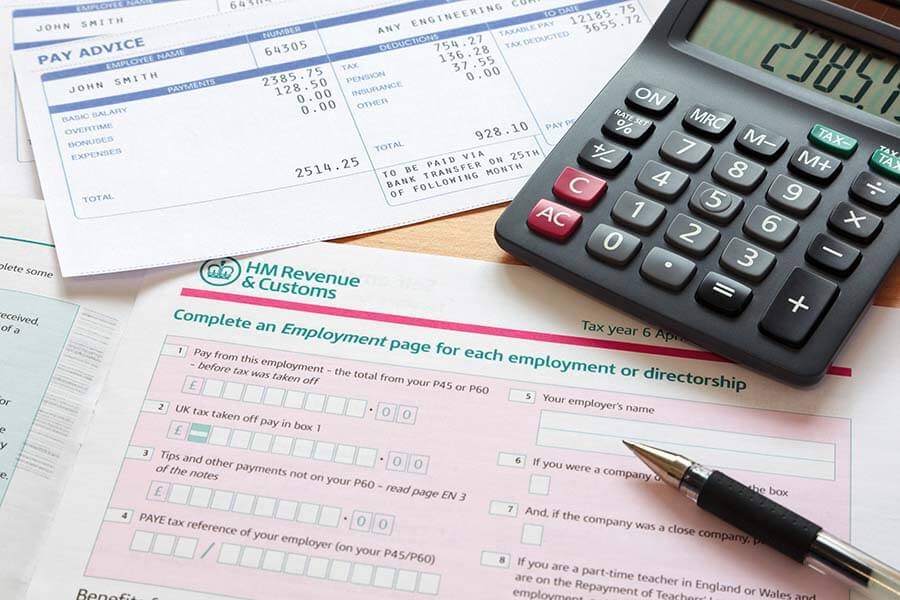Have you been asked for your ERN? If you’re wondering what on earth it is, you’ve come to the right place. We’ve got everything you need to know about this important piece of information.
If you’re an employer, you almost certainly need an ERN. Let’s find out what those three little letters stand for, and just why they matter so much.
What is your ERN?
ERN stands for Employer Reference Number. But what is an Employer Reference Number?
It’s a number that’s used by HMRC to identify your company. (HMRC stands for His Majesty’s Revenue and Customs, and it’s the government department that’s responsible for tax.) Many businesses have the same or similar names. But each company’s ERN is unique.
Records are kept of all ERNs. And they can be used by HMRC (and others) long after the company has ceased to exist.
Is ERN the same as a PAYE reference?
The ERN is sometimes referred to as the Employer PAYE Reference. PAYE stands for “Pay As You Earn”, and it’s a way HMRC collects tax and National Insurance contributions. An ERN and an employer PAYE reference are the same thing.
Confusingly, however, even HMRC uses both terms. You’ll see the number referred to as an ERN on your employees’ P45s, for example. But on a P11D form, used to set out the value of employee benefits, it’s referred to as the Employer PAYE Reference.
What does an ERN look like?
An ERN is a mixture of letters and numbers. In most cases, there will be three digits, then a slash, followed by one or two letters and five more digits.
It will look something like this: 123/A45678 or 123/AB45678
The first three digits identify the HMRC office that deals with the company. The rest of the code identifies the business itself.
You can have a longer or shorter ERN. But it will be between five and 12 characters long.
Where do I find my ERN?
If you’ve registered as an employer with HMRC, you’ll already have an ERN. You can find it on the welcome pack you received when you registered.
If you can’t find that, check other tax forms, reminders, or payslips for your company. The number will appear on any P45 or P60 forms for your employees.
How do I get an ERN number?
If you don’t already have an ERN, you’ll need to register with HMRC as an employer. You should do that as soon as you start to employ staff.
If yours is a limited company with between one and nine directors, you can register online as long as:
- there’s at least one company director with a National Insurance number
- the company isn’t an offshore employer outside the European Economic Area which doesn’t pay UK National Insurance
- the company won’t be paying any non-cash incentive awards (like vouchers, competition prizes or holidays) within the next two months, whether that’s to employees or to anyone else.
If you’re not able to register online, you can do it over the phone or by post. Call the HMRC helpline, and they’ll help you through the process.
What information do you need to register for an ERN?

To complete the registration process, you’ll need:
- The basic details for your company — its name, registered address and telephone number. If it trades under a different name, you’ll need that too.
- The business activities your company undertakes — for example, construction, marketing or chemical engineering
- Your company’s Unique Taxpayer Reference (UTR) — this will be on most correspondence from HMRC
- Your company’s registration number — i.e. the number you got when the company was registered at Companies House
- Details of all the directors of the company — their full names and National Insurance numbers.
Why do you need an ERN?
So you know how to find or get an ERN. But why do you need one?
HMRC need ERNs for all companies that employ staff. They use them to keep records of who is employed where, and how much tax and National Insurance they’re paying.
But you’ll need your ERN too. You (or your accountant) will need it to complete your tax return.
And unless you only employ family members, you’ll need to take out Employers’ Liability Insurance. It’s a legal requirement that you have cover of at least £5 million from an authorised insurer. Your insurer will need your ERN to give you cover.
(Don’t even think about skipping the insurance! If you get found out, you could be looking at a fine of £2,500 for every day that you’re not insured.)
Your employees may need your ERN too — for example, if they’re applying for tax credits or a student loan.
Why do insurers need your ERN?
Insurers are legally required to provide records of Employers’ Liability Insurance to a body called the Employers Liability Trading Office, or ELTO. They have to do this within 90 days of your policy starting.
The ELTO stores information on policyholders and their insurance on the Employers’ Liability Database (ELD). But why?
Well, some insurance claims can be submitted many years after the policy was set up. To give one example: many people developed diseases as a result of being exposed to asbestos at work. That didn’t happen until decades after their exposure.
When so much time has passed, the companies that employed those people might have changed names or ownership. They might have ceased to operate altogether.
That makes it very important to be able to track down the right insurance policy, so that people can receive compensation. That’s what the database is there to do.
Do all companies need an ERN?
You should get an ERN if you start to employ someone. But what does that really mean?
Not everyone who works for a company is actually an employee. Exceptions are:
- People who work for you via an agency. In this case, the agency is the employer. (The exception to this is subcontractors in the construction industry, where you will still need an ERN)
- People who carry out work for you, but who are self-employed. An example might be a self-employed plumber who provides services to your business. (Though again, note the exception for sub-contractors for work in construction)
- People who are volunteers and who are not paid for the work they do.
You won’t need an ERN either if:
- You only employ people who are paid less than the Lower Earnings Limit and who don’t have another job or pension. At the time of writing, the Lower Earnings Limit is £123 per week.
- Your business is based on the Isle of Man or in the Channel Islands
But you will need an ERN if you’re a limited company which only has directors. Even though directors aren’t formally employees, they count when it comes to the ERN.
Can a company have more than one ERN?
If a company has more than one location, it might operate a number of different PAYE schemes with different tax offices. If that’s the case, it will have more than one ERN number too.
Recap: what is an ERN?
So what is an ERN number? It’s a unique combination of numbers and letters that identifies your company to HMRC. Almost all companies who employ someone — including limited companies which only have company directors — will need one.
Your ERN is also your ticket to Employers’ Liability Insurance. That’s a legal requirement that applies to almost all employers too. And your staff will need it as well, to apply for things like tax credits or student loans.
All this makes it very important! You’ll get your ERN when you register as an employer with HMRC. If you can’t find your HMRC welcome pack, it will be on most tax documents. And if a form has an “Employer PAYE reference number” on it, it’s the same thing.
Also read:
- The basics of business insurance
- What is professional indemnity insurance?
- Who needs professional-indemnity insurance?
- Self-employed? What business insurance do you need?

